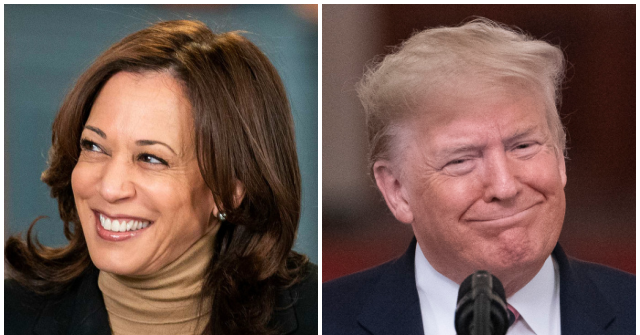The debate over tariffs in the United States reveals a significant divide between popular public sentiment and the views held by Wall Street economists. Recent polling indicates that a substantial majority of Americans, specifically 57% of likely voters, support proposals to raise taxes on imported goods, while only 42% oppose them. In stark contrast, prominent economists on Wall Street have long opposed tariffs, aligning themselves with the principles of globalization and the financialization of the economy. This disparity highlights an intriguing tension within economic policy debates, as many politicians, including Vice President Kamala Harris, argue that tariffs function similarly to a national sales tax, inevitably leading to higher prices for consumers. However, public sentiment appears to reject this claim, emphasizing a broader belief that the benefits of tariffs outweigh the associated costs.
The prevailing narrative among economists posits that tariffs impose dispersed costs on consumers through increased prices while providing concentrated benefits to domestic manufacturers. This theory suggests that free trade is generally beneficial but politically difficult due to the challenges posed by organized special interests. Yet, this perspective has faced criticism, as it fails to account for the endurance of protectionist policies. If the economic framework proposed by free trade advocates were accurate, protectionism would dominate globally rather than recede in the post-World War II era, leading to a fundamental re-evaluation of trade policy. The reality is that a divide exists between Wall Street and Main Street, where the interests of special groups may not align with the general public. Tariffs are portrayed as a means to address this fundamental imbalance, as economists have misidentified the beneficiaries and the detriments of trade policies.
Interestingly, support for tariffs is stronger among voters than the support for corporate tax cuts, an area that traditionally fetched widespread backing from Republicans. Polling data reveals that only 42% of likely voters favor reducing corporate taxes, while 56% oppose such cuts. This reversal in public opinion suggests that the dynamics surrounding tariffs and corporate taxes are fundamentally different. President Trump’s strategic approach to this divide has become evident, as he proposes blending public support for tariffs with traditional Republican values by offering lower tax rates for companies that manufacture products in the U.S. This initiative seeks to merge the economic nationalism reflected in tariff support with the pro-growth rhetoric associated with corporate tax reductions, encapsulating a new kind of political entrepreneurship.
The divide between Main Street and Wall Street extends beyond tariff policies and into broader perceptions of economic stewardship. Polling data indicates that the public generally believes Trump would be a better manager of the economy than Harris. For instance, a recent ABC poll shows Trump leading Harris by eight points on economic issues, including inflation. Additionally, battleground state polling conducted by the Wall Street Journal reveals a 50% to 40% preference for Trump over Harris in terms of economic management. Despite these public sentiments, Wall Street economists tend to favor Harris, with 45% believing the economy would grow more rapidly under her leadership compared to 37% for Trump. This misalignment in expectations showcases Wall Street’s confidence in Harris’s policies while simultaneously registering skepticism toward Trump’s potential economic impact.
The nuanced perspectives of Wall Street economists also lead to intriguing predictions regarding monetary policy. A notable majority believe that interest rates would be higher under a Trump presidency, despite their confidence that the economy would not expand as swiftly as it might under Harris. This raises questions about how economic conditions might be shaped by political leaders and suggests Wall Street economists expect the Federal Reserve’s approach to become more politicized should Trump regain the presidency. This skepticism further complicates existing narratives about the Fed’s independence and its economic role in maintaining a stable environment free from overt political pressures.
In conclusion, the ongoing debate around tariffs and economic policy reveals significant differences in perception between the public and Wall Street economists. While the majority of Americans support tariffs as a means to protect domestic manufacturing and promote national interests, a dominant faction of economists remains steadfast in their opposition. This divide complicates the broader understanding of economic policy and its implications, highlighting the dynamic interplay between public sentiment and elite economic perspectives. The prominent discord between Main Street and Wall Street underscores the potential for a renewed examination of economic policies, emphasizing the need for alternative approaches that consider the interests and beliefs of everyday Americans over globalized economics.

